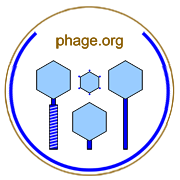

The process of phage adsorption, infection, and release where the release requires destruction of the bacterial cell envelope
The phage life cycle, in other words, involves a lytic infection. As equivalent to a phage life cycle, the lytic cycle exists as two distinct types, one that begin with adsorption, and which could be described as an "immediate lytic cycle", and one that begins with prophage induction (which could be described as an "induced lytic cycle").
In either case, note that the actual lytic infection is only a portion of the overall lytic cycle since phage life cycles also involve a dissemination or 'extracelullar search' step, that is as occurs post-release and pre-adsorption. Thus, a lytic cycle will involve diffusion/extracellular search → encounter → (reversible adsorption) → irreversible adsorption → translocation/uptake → eclipse → post eclipse/maturation of phage particles → lysis → diffusion/extracellular search.
To some degree the term "lytic cycle" is a misnomer if the term is used to describe a phage life cycle that also involves a lysogenic infection, that is, adsorption → lysogenization → lysogenic infection → induction → lytic infection → release → adsorption. In other words, this is a description of a life cycle that involves a lytic infection but strictly is not a "lytic cycle" as equivalent to the actual cycle that is seen with immediately lytic cycles (i.e., as recounted in the previous paragraph). The use of the "lytic cycle" with this "induced lytic cycle" meaning, however, is thoroughly entrenched within the literature so should not be modified except, as appropriate, with the qualification of whether by lytic cycle one is referring to one that follows induction or instead which immediately follows adsorption.
For more on this topic, see Wikipedia, Google, and PubMed. Contact web master. Return to terms.